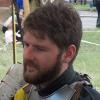With this first entry, we are starting a series of irregular developer diaries, which should give you a glimpse into the problematics of creating Take on Mars.
In this developer diary I would like to give you an idea how we proceed during the creation of the realistic locations in Take on Mars. Do not be afraid, it is not rocket science and I am sure that after reading this series of articles you will have an idea on how to create locations of your own, using the integrated Workbench suite shipped with the game.
What we do, is that we first create a "Supertexture" – a high resolution image of the landscape which is mapped on to the in-game terrain. As a source for this Supertexture, we use the publicly available satellite data provided by NASA. These images are accessible under the "Public Domain" license, which means that anyone can grab these images of Mars acquired by the HiRISE satellite and use them in their products.
www.uahirise.org, source for satellite data acquired by NASA. Courtesy of NASA/JPL/University of Arizona
For this example, I have selected the satellite images from the North pole which I am currently working on. HiRISE lets you download the black and white satellite images in an extreme resolution of 32046×42431 pixels. When imported into Photoshop, the final file can take up to 4GB of data; that is the situation where a PC with a large amount of RAM comes in handy.
Such a huge image provides a resolution of ~4 pixels per square meter. For both polar caps (south and north) we decided to create two 2×2 km locations. This means that the final resolution of the Super texture for this location will be 8192 pixels. These 2×2 km represent the playable area, but won't look all that good if the terrain is suddenly cut-off at the edges.
Therefore it is necessary to create an illusion of the much wider terrain, which is achieved by making a fake surrounding terrain via model. To ensure good visibility, we need to take data from an area of at least 5×5 km, which makes up an image of total 20480×20480 pixels.
The satellite image ready to be cropped, the white rectangle represents the playable area (2x2 km)
The final 20480×20480 px. image will serve as a source for creating the texture for the fake surround terrain and also for the 8048×8048 Supertexture used in the location itself. Because such huge images are very cumbersome to work with, it is better to first create a low resolution re-color prototype and test it in game.
Supertexture prototype in game editor, mapped on flat terrain
Sometimes NASA also provides terrain height data with their satellite pictures. Unfortunately in this case there weren't any height data available for this location, thus it was necessary to sculpt the terrain by hand, but that will have to wait until the next developer diary!









